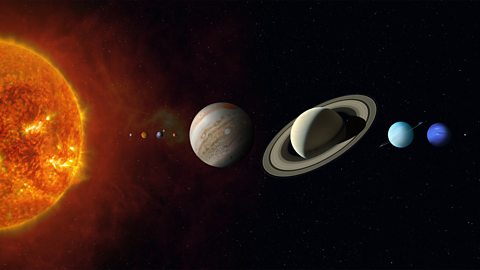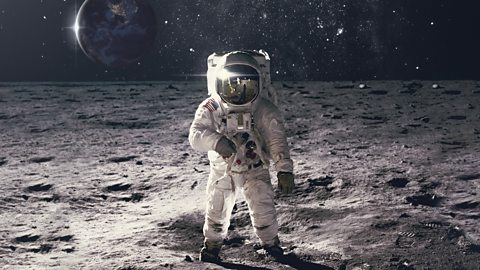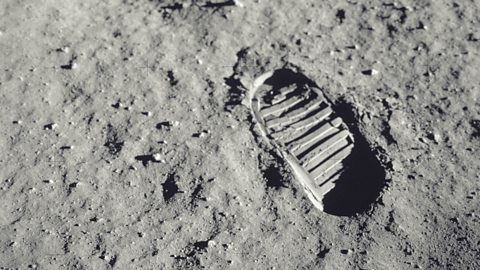Fun and interesting facts about space for kids
Beyond Earth's atmosphere, roughly 62 miles above sea level, exists outer space, commonly referred to simply as space. From gassy giants to space junk, itās a world entirely of its own ā and not as empty as it seems.
Here are our 10 fun facts about space.
1. Space is completely silent

Sound as we know it does not exist in space. Thatās because, on Earth, sound mainly travels to our ears via vibrating air molecules. Because space is a vacuum, meaning there is no matter at all ā not even air particles ā sound cannot travel, making space completely silent.
In many ways itās a good thing sound doesnāt travel through space: if it did, the Sun would be blaring out at around 100 decibels 24/7. Thatās the same volume as standing next to a speaker at a rock concert ā pretty impressive when you consider the Sun is 93,000,000 miles away from Earth!
2. The true size of the Sun
Speaking of the Sun, itās quite big ā so big, in fact, that you could fit one million Earths inside it!
Our Sun is 864,000 miles in diameter, the diameter of Earth is 7,926 miles. Despite this dramatic size difference, our Earth is actually far denser than the Sun, so it would only take a minuscule 333,000 Earths to match the mass of the Sun.
3. How long is a day on Venus?
Venus spins at a much slower rate than Earth. One complete rotation of Venus takes 243 Earth days. Imagine a school day that longā¦
To make things stranger, a year on Venus lasts only 225 Earth days. Thatās right: a Venusian year is shorter than a Venusian day! This is because Venus is orbiting the Sun at a much faster rate than Earth.

4. Dogs went to space first!
Manās best friend - but also space pioneers. Dogs made it into space years before we did.
The first animal to make it into orbit was the Laika the dog, aboard the Soviet spacecraft Sputnik 2 on the 3rd November 1957. Laika was a stray dog found in Moscow. The scientists believed a homeless animal would be better equipped to endure the harsh conditions of space travel.
5. You can't walk here

Thatās because these planets are primarily made from gas and have no solid surface. This group of planets is also known as the āJovian Planetsā after the Roman god Jupiter.
Jupiter is roughly 11 times the diameter of Earth, Saturn nine times, and Uranus and Neptune about four times Earthās diameter.
6. How far away is Pluto?
The distance from Earth to Pluto is 4.67 billion miles. The average passenger aircraft travels at 575 miles per hour.
That means it would take more than 8 million hours to reach the planet, or over 900 years! Imagine how many snacks you would need to pack.
Learn more about the science of space in these GCSE Physics study guides.
7. Littering in space
Space junk (also known as space debris or space pollution) is any man-made object orbiting Earth that no longer serves a useful purpose.
Scientists estimate there are around 500,000 pieces of space junk today. This can include small parts of broken rockets and satellites, everyday items such as spanners and other tools that may have been dropped during the construction of the International Space Station, right down to tiny paint chips.
Space junk is actually a big safety concern. Since both the debris and spacecraft in orbit are traveling at extremely high speeds (approximately 15,700 mph in low Earth orbit), an impact of even a tiny piece of space junk could smash a hole through the side of a spacecraft!
8. Man's first steps on the Moon

On 20th July 1969, Neil Armstrong was the first person to set foot on the Moon in human history.
He was accompanied by Buzz Aldrin and Michael Collins aboard the Apollo 11 rocket. The American team was the first to reach the Moon after a closely fought race with the Soviet Union.
The astronauts spent 21 hours, 36 minutes on the Moon's surface before beginning their journey back to Earth. This was one of six missions to the Moon, the last one taking place in 1972 ā humans have not returned to the Moon since.
Learn more about the first Moon landing in this guide for children aged 5-7.
9. Mountains on Mars
The highest mountainā¦ is on Mars! Olympus Mons is the tallest mountain in our solar system, standing at roughly 13 miles high. Itās about two and a half times Mount Everest's height above sea level ā imagine how long that would take to climb.
10. Footprints on the Moon

Footprints on the Moon don't disappearā¦ Thatās because, unlike on Earth, there is no wind or water to erode the footprints. There is no wind or water because the Moon has no atmosphere, and all the water on the surface is frozen as ice.
Where can I learn more about space and planets?
Has our top ten got you keen to learn more? Find more space facts tailored to your age from “óĻó“«Ć½ Bitesize: